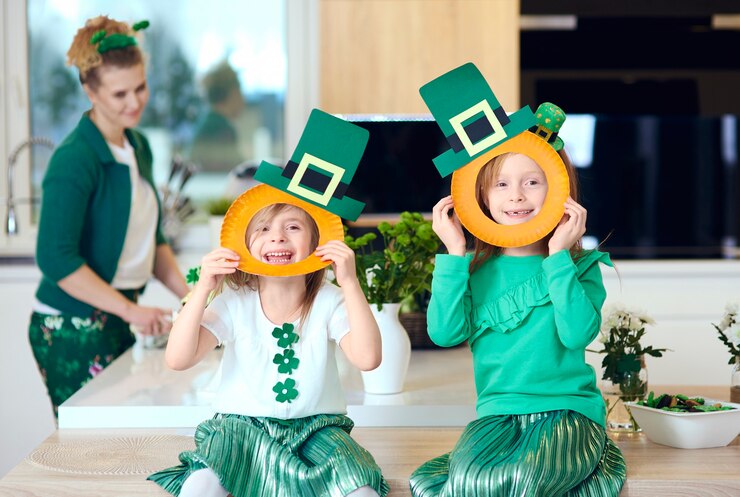History and Origins of St. Patrick’s Day:
Happy St. Patrick’s Day commemorates the death of St. Patrick, the patron saint of Ireland. Originally a religious holiday, it honors St. Patrick’s efforts to bring Christianity to Ireland. The celebration on March 17th marks the anniversary of his death. St. Patrick’s Day also coincides with the traditional date of the arrival of Christianity in Ireland and the feast day of St. Patrick himself.
Traditional Irish Celebrations on St. Patrick’s Day:
In Ireland, St. Patrick’s Day is celebrated with religious observances, parades, and festivals. It’s a public holiday marked by attending church services, wearing green, and enjoying traditional Irish foods like corned beef and cabbage, Irish soda bread, and Guinness stout. The day is also an occasion for family gatherings and social events, with music, dancing, and storytelling.
Fun Facts about St. Patrick’s Day:
Did you know St. Patrick actually wore blue? Celebrate Happy St. Patrick’s Day with these interesting facts: St. Patrick’s Day was originally associated with the color blue, the shamrock represents the Holy Trinity, and the first St. Patrick’s Day parade was held in America, not Ireland.
How to Celebrate St. Patrick’s Day at Home:
Create a festive atmosphere at home by decorating with green, cooking traditional Irish dishes, hosting a virtual party with friends, and enjoying Irish music and movies. Don’t forget to wear green attire and accessorize with shamrocks to get into the spirit of the holiday.
Delicious St. Patrick’s Day Recipes to Try:
Indulge in Irish cuisine with these mouthwatering recipes: Corned Beef and Cabbage, Shepherd’s Pie, Irish Soda Bread, Guinness Chocolate Cake, and Shamrock Shake. These dishes are sure to delight your taste buds and add a festive touch to your St. Patrick’s Day celebration.
St. Patrick’s Day Traditions around the World:
While St. Patrick’s Day is most commonly associated with Ireland, it is celebrated worldwide with parades, festivals, and cultural events. Cities like New York, Chicago, and Sydney host some of the largest St. Patrick’s Day parades outside of Ireland, showcasing Irish pride and heritage on a global scale.
Crafting Ideas for St. Patrick’s Day Decorations:
Get creative with DIY decorations using green, gold, and shamrock motifs. Make wreaths, banners, centerpieces, and garlands to adorn your home and create a festive atmosphere for St. Patrick’s Day. Involve the whole family in crafting decorations to add a personal touch to your celebration.
St. Patrick’s Day Parades: History and Significance:
St. Patrick’s Day parades date back to the 18th century in America, where Irish immigrants organized processions to celebrate their heritage and culture. Today, these parades are a beloved tradition, featuring marching bands, bagpipers, dancers, and elaborate floats. They serve as a symbol of Irish identity and pride, bringing communities together to honor St. Patrick and Irish heritage.
The Symbolism behind Shamrocks and Leprechauns:
Shamrocks are associated with St. Patrick’s Day because St. Patrick used the three-leafed clover to explain the Holy Trinity. Leprechauns, mythical creatures from Irish folklore, are often depicted as mischievous beings who hide their pots of gold at the end of rainbows. Both symbols are deeply ingrained in Irish culture and are widely recognized as symbols of luck and good fortune.
St. Patrick’s Day in Popular Culture: Movies, Music, and Literature:
St. Patrick’s Day has inspired countless works of art, literature, and entertainment. From classic films like “The Quiet Man” and “Darby O’Gill and the Little People” to traditional Irish music and folk songs, the holiday is celebrated in popular culture around the world. Literature, poetry, and folklore also pay homage to St. Patrick and the rich tapestry of Irish heritage and tradition.
More at: https://threesixtywords.com/




